Microchip HV9911DB1 Handleiding
Microchip
Niet gecategoriseerd
HV9911DB1
Bekijk gratis de handleiding van Microchip HV9911DB1 (7 pagina’s), behorend tot de categorie Niet gecategoriseerd. Deze gids werd als nuttig beoordeeld door 36 mensen en kreeg gemiddeld 4.9 sterren uit 18.5 reviews. Heb je een vraag over Microchip HV9911DB1 of wil je andere gebruikers van dit product iets vragen? Stel een vraag
Pagina 1/7

Supertex inc.
Supertex inc.
www.supertex.com
HV9911DB3
Doc.# DSDB-HV9911DB3
A032713
General Description
The HV9911DB3 is an LED driver capable of driving up to 25
one-watt LEDs in series from an input of 130 - 200VDC. The
demoboard uses Supertex’s HV9911 in a buck topology with the
HV7800 used for high side current sensing. The converter has
a very good initial regulation (+/-5%) and excellent line and load
regulation over the entire input and output voltage range (<+/-
2%). The full load efciency of the converter is typically greater
than 85%.
The HV9911DB3 is protected against open LED and output short
circuit conditions. It is also protected from input under voltage
conditions. It has a very good PWM dimming response, with
typical rise and fall times of less than 5.0μs, which will allow high
PWM dimming ratios.
The switching frequency of the HV9911DB3 can be synchronized
to other HV9911 boards or to an external 150kHz clock by
connecting the clock to the SYNC pin of the HV9911DB3.
Board Layout and Connection Diagram
High Brightness Step-Down LED Driver Demoboard
with Excellent Current Regulation
Specications
Parameter Value
Input voltage (steady state): 130 - 200VDC
Output LED string voltage: 20V min - 100V max
Average output current: 350mA +/-5%
Output current ripple: 5% typical
Switching frequency: 150kHz
Full load efciency: 90% (at 150V input)
Output short circuit protection: Included
Input under voltage protection: Included
PWM dimming performance: 5.0μs (rise time)
5.0μs (fall time)
Dimensions: 53.7mm x 38.1mm
Connections:
Input - The input is connected between the VIN+ and GND
terminals as shown.
Output - The output is connected between the VO+ and VO-
terminals as shown, with the ANODE of the LED string to
VO+ and the CATHODE to connector VO-.
Enable/PWM Dimming - To enable the board, short pins
PWMD and VDD of connector J1 as shown. To use the PWM
dimming feature of the board, connect an external push-pull
square wave source between terminals PWMD and GND of
connector J1 as shown by the dotted lines.
SYNC - To synchronize two or more boards, connect the
SYNC pins of all the boards. To synchronize the HV9911DB3
to an external 150kHz clock, connect the clock between the
SYNC pin and the GND pin of connector J1.
Note:
During PWM dimming, the PWMD pin of connector J1
should be left open. Also, the PWM signal must have the
proper polarity, with the positive connected to the VDD
pin of connector J1. Note that the GND pin of connector
J1 is internally connected to the return path of the input
voltage.
Actual Size: 53.7mm X 38.1mm
V
IN
J1
J5
J2 J4
J3
GND
PWMD
VDD
SYNC

2
HV9911DB3
Supertex inc.
www.supertex.com
Doc.# DSDB-HV9911DB3
A032713
Demoboard Testing:
Normal Operation: Connect the input source and the output
LEDs as shown in the connection diagram and enable the
board. The LEDs will glow with a steady intensity. Connecting
an ammeter in series with the LEDs will allow measurement
of the LED current. The current will be 350mA +/- 5%.
Current Regulation: While the converter is operating,
change the input voltage within its speciied input voltage
range. The current output of the HV9911DB3 will remain very
steady over the entire line range. With the supply turned off,
change the number of LEDs in the string within the specied
limits and turn the power supply back on. The current will still
be regulated at 350mA.
Open LED Test: The buck converter is inherently protected
against open LED conditions since the maximum output
voltage is limited to the input voltage. If the LED string is
disconnected during operation, the output voltage of the
converter will rise and stay at the input voltage level.
Short Circuit Test: When the HV9911DB3 is operating in
steady state, connect a jumper across the terminals of the
LED string. Notice that the output current will immediately
go to zero and the converter will shut down. To restart the
HV9911DB3, recycle the input power to the demoboard.
PWM Dimming: With the input voltage to the board
disconnected, apply a TTL-compatible, push-pull square
wave signal between the PWMD and GND terminals of
connector J1 as shown in the connection diagram. Turn
the input voltage back on and adjust the duty cycle and/or
frequency of the PWM dimming signal. The output current
will track the PWM dimming signal. Note that although the
converter operates perfectly well at a 1kHz PWM dimming
frequency, a wider PWM dimming ratio can be obtained at
lower frequencies, like 100Hz or 200Hz.
Effect of the High Side Disconnect Switch
The high side disconnect switch included in the HV9911DB3
disconnects and reconnects the load during PWM dimming.
This prevents the output capacitor from having to charge/
discharge every cycle, leading to shorter PWM dimming rise
and fall times. It also limits the surge current through the
output sense resistor during output short circuit conditions.
However, the level translator needed to drive the disconnect
FET consumes power during normal operation and reduces
the overall efciency of the converter by about 3% at full
load. The decision to include or exclude the high side driver
should depend on which factor is more important, high PWM
dimming or converter efciency. The following typical results
section will show the results for both cases.
Typical Results
1. Efciency: The efciency of the converter at various LED
string voltages is shown in Fig.1 (measured at the nominal
input voltage of 150V). Fig.2 shows the full load efciency
of the converter at varying input voltages. The minimum
efciency of 93% for the converter occurs at 21V input and
full load output.
2. Current Regulation: Fig.3 and Fig.4 show the output
current regulation vs. output voltage and load voltage,
respectively. The total current regulation (line and load
combined) is found to be less than 1%.
60
65
70
75
80
85
90
95
20 30 40 50 60 70 80 90 100
Output Voltage (V)
Effi (%ciency )
With T Disconnect FE Without onne Disc ct FET
86
88
90
92
94
96
130 140 150 160 17 18 19 200 0 0 0
Input Voltage (V)
Effi (%ciency )
With T Disconnect FE Wit hout Disconnect FET
Fig. 2 Efficiency vs Input Voltage
Fig. 1 Efficiency vs Output Voltage
335
336
337
338
339
340
130 140 150 160 170 180 19
0 2
00
In ltput Vo age (V)
Output Cu A)rrent (m
337.0
337.2
337.4
337.6
337.8
338.0
20 30 40 50 60 70 80 90 100
Output Voltage (V)
Output Current (mA)
Fig. 4 Output Current vs Output Voltage
Fig. 3 Output Current vs Input Voltage

3
HV9911DB3
Supertex inc.
www.supertex.com
Doc.# DSDB-HV9911DB3
A032713
3. Normal Operation: Figs.5a, 5b, and 5c show the drain
voltage and output current waveforms during normal
operation.
4. Open LED Protection: Open LED protection is inherent
for the buck converter, as the maximum output voltage is
limited to the input voltage. Fig.6 shows the output voltage,
LED current, and the drain voltage of the switching FET when
the load is disconnected during normal operation. The FET
is always turned on during this time and the output voltage is
equal to the input voltage. If the output voltage sags due to
current leakage, the FET resumes switching until the input
and output voltages become equal.
5. Output Short Circuit Protection: Fig.7 shows the
waveforms for an output short circuit condition. Although the
FAULT pin goes to zero in about 300ns and the switching is
terminated, the time taken for the disconnect FET to turn off
(and the current to go to zero) will depend on the RC time
constant of the resistor R17 (refer to schematic diagram) and
the CGS of the disconnect FET. In this case, the disconnect
FET is turned off in about 3μs. The rise in the output current
will depend on the saturation current of the disconnect FET.
Drain voltage
Drain voltage
Drain voltage
LED Current
LED Current
LED Current
Fig.5a Waveforms at VIN = 150V and VO = 100V
Fig.5a Waveforms at VIN = 200V and VO = 20V
Fig.5a Waveforms at VIN = 130V and VO = 100V
Output Voltage
FET n Drai Voltage
Output Current
Fig.6 Open LED Protection
Output Current
Drain Voltage of Q1
Output ltage Vo
Fig.7 Output Short Circuit Protection
Product specificaties
| Merk: | Microchip |
| Categorie: | Niet gecategoriseerd |
| Model: | HV9911DB1 |
Heb je hulp nodig?
Als je hulp nodig hebt met Microchip HV9911DB1 stel dan hieronder een vraag en andere gebruikers zullen je antwoorden
Handleiding Niet gecategoriseerd Microchip

14 Mei 2025

6 Mei 2025

6 Mei 2025

6 Mei 2025

6 Mei 2025

6 Mei 2025

6 Mei 2025

6 Mei 2025

6 Mei 2025

6 Mei 2025
Handleiding Niet gecategoriseerd
- Balay
- Tablo
- Netgear
- RGBlink
- Longvie
- Adam
- Broan
- Disty
- Welcare
- Hitachi
- Nanni
- OptiTrack
- Improv
- Nivona
- Lantus
Nieuwste handleidingen voor Niet gecategoriseerd
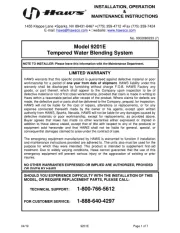
16 September 2025
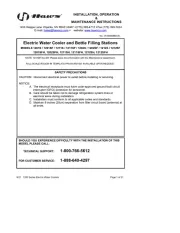
16 September 2025
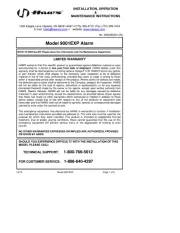
16 September 2025

16 September 2025
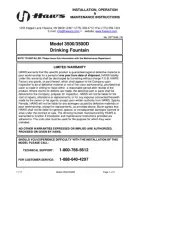
16 September 2025
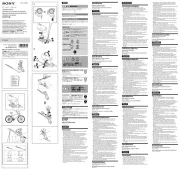
16 September 2025

16 September 2025

16 September 2025
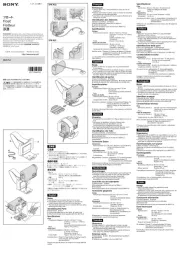
16 September 2025
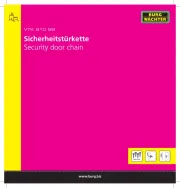
16 September 2025